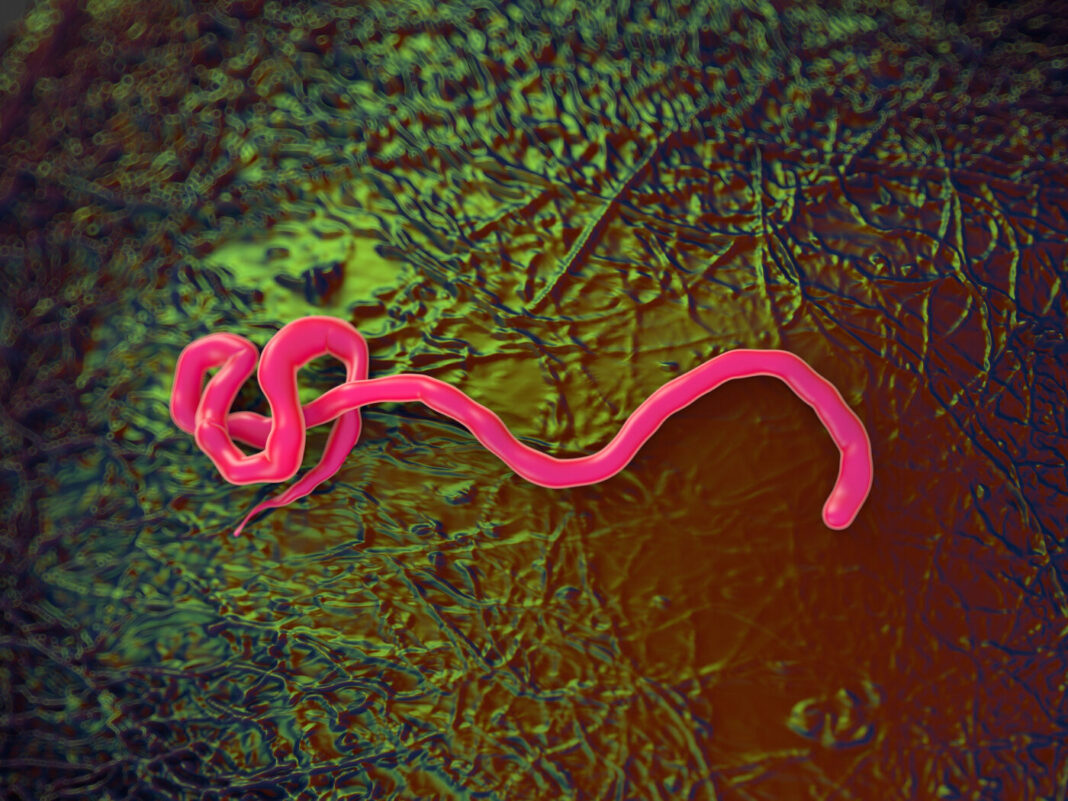Out of the five Ebolavirus species—Ebola virus (Zaire ebolavirus); Sudan virus (Sudan ebolavirus); Taï Forest virus (Taï Forest ebolavirus, formerly Côte d’Ivoire ebolavirus); Bundibugyo virus (Bundibugyo ebolavirus); Reston virus (Reston ebolavirus)—vaccines and monoclonal antibody cocktails are available to treat only Ebola virus infections. However, broad-spectrum therapies are needed that neutralize multiple Ebolavirus species. To that end, researchers are trying to develop human antibodies that target vulnerable sites across Ebolavirus species.
Current cocktails contain antibodies that cross-react with the virus’s secreted soluble glycoprotein (sGP) that absorbs virus-neutralizing antibodies. Researchers sorted memory B cells from Ebola virus infection survivors to isolate two broadly reactive anti-GP monoclonal antibodies—1C3 and 1C11. These antibodies potently neutralize, protect rodents from disease, and lack sGP cross-reactivity. A cocktail of both antibodies, the researchers noted, completely protected nonhuman primates from Ebola virus and Sudan virus infections, indicating their potential clinical value.
The work is published in Cell in the paper, “Asymmetric and non-stoichiometric glycoprotein recognition by two distinct antibodies results in broad protection against ebolaviruses.”
The new study shows that two human antibodies can target both Ebolavirus species Ebola virus and Sudan virus. These two species are responsible for the biggest, deadliest outbreaks. The new report suggests researchers could combine these two potent antibodies to make a powerful antiviral therapy.
“Finding antibodies with this breadth is important because we don’t know which virus in the genus of ebolaviruses is going to break out next,” said Erica Ollmann Saphire, PhD, president & CEO of the Center for Infectious Disease and Vaccine Research.
The team used cryo-electron microscopy (cryo-EM) to learn how these antibodies neutralize ebolaviruses. This imaging gave them a clear view of how the two antibodies, 1C3 and 1C11, bind to vulnerable sites on an ebolavirus glycoprotein. Both antibodies recognize quaternary epitopes in trimeric ebolavirus GP.
They were surprised to see that 1C3 attacked the glycoprotein in an unexpected way. “This antibody might punch above its weight,” said Saphire. “The antibody is able to block three sites on the virus at the same time using different loops and structures to anchor into each one. That is remarkable.”
Meanwhile, the paired antibody 1C11 binds to the fusion machinery the virus would normally use to enter and infect host cells. As Saphire explained, because the fusion machinery has such a critical job, it looks very similar between Sudan virus and Ebola virus. “This is a site of very broad recognition and resistance to any antibody escape,” she added. “That’s how this antibody gets its breadth.”
More specifically, 1C11 bridges adjacent protomers via the fusion loop while 1C3 has a tripartite epitope in the center of the trimer apex, the authors noted. “One 1C3 antigen-binding fragment anchors simultaneously to the three receptor-binding sites in the GP trimer, and separate 1C3 paratope regions interact differently with identical residues on the three protomers,” they wrote.
While there are antibody therapies against Ebola virus, some antibodies in these therapies don’t actually neutralize the virus. Instead, the antibodies home in on a decoy protein, called soluble glycoprotein, that the virus makes. Fortunately, 1C3 and 1C11 ignore the decoy and go straight for the virus’s actual surface glycoprotein structure. This means the researchers could use fewer antibodies to effectively target Ebola virus and Sudan virus. “If 80–90% of what’s there is some kind of smokescreen, having antibodies that can target the vulnerable spot is valuable,” Saphire said.
The two antibodies performed very well outside the lab. Study collaborators found that combining 1C3 and 1C11 in an antibody therapy could protect against Ebola virus and Sudan virus disease in nonhuman primates, reversing severe symptoms. The broad-spectrum effects of the two antibodies make them a promising therapy for situations when doctors don’t have time to figure out which Ebolavirus species is responsible.
Even better, these antibodies may be effective even when given late in the course of the disease. This late treatment would be extremely valuable because many patients with either Ebola virus or Sudan virus have already progressed far into infection when they are diagnosed.
“The first symptoms of Ebola virus tend to be a fever and a headache, which can look like a lot of different diseases,” Saphire said. “An antibody that can be used later in the course of disease is a lot more useful.”
Going forward, the team is trying to figure out how much lower the dosage could be. In the nonhuman primate trial, even the lowest dose provided 100% protection. This is an important question to answer because lower doses would make the therapy much cheaper to produce.


